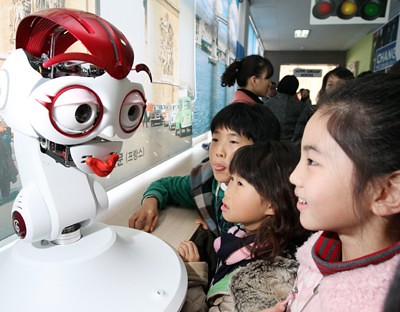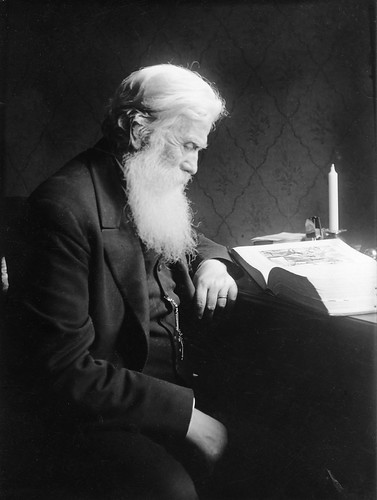Hey guys,
I remember for one presentation that we used an already made comic strip, I think for Kiran’s. Does anyone have the link to get that again? I am teaching Monday and would love to use it!!!! Please let me know! I tried looking through her posted presentation but cant find it….
Thanks
Sarah
Entries Tagged as 'Introductions'
HELP!!!!!
November 1st, 2012 · 4 Comments
Tags: Introductions
Interactive and Intriguing?
October 22nd, 2012 · 1 Comment
After reading Hayles, N. Katherine. (2007). Electronic literature: What is it? The Electronic Literature Organization, I found that most of the information wasn’t all that surprising. I really liked how it was acknowledged that e-lit challenges the reader and stretches the imagination. Hard cover books, whether they include pictures or not, can not evoke the imagery and limitlessness that interactive media can preform. The link that I selected from e literature collection, shows the by clicking your mouse pad, new works appear, new sentences move around, and have the potential to evoke different emotions then what may have be able to happen but having all of the words displayed upon the screen, or page all at once. This video, smooth, also had moving imagery, and music. The creator is playing on all of our senses that are possible through a computer screen. Even though smell can not be preformed, it can be conveyed through the imagery. Showing sunflowers blowing in the summer sun, someone drinking hot coffee, and many more images can show us what we are supposed to be smelling. Creating a sensation within our senses that makes us believe what we are watching. In “smooth” there are images of grass type things moving back and forth. Through the sounds I first believed it to be outside in a meadow at night, smelling the warmth in the air, however as it goes on there are noises of water and then I believed that I was under water and could smell the stale dampness of a swamp. There were many images and thoughts that were evoked by this poem. It also took me more then one time of watching and clicking to actually read what the words all were. Through this I also found a downfall. When is too much stimulation, too much. When we are dealing with a book, there are words, and sometimes images. All of this being interpreted by our eyes, while e literature can use so many senses that it may become overwhelming. I got lost in these poems and watched, and clicked for more time then I would have liked to. I still don’t really understand the thoughts behind each section, and that leaves me vaguely remembering what I saw, and more wanting to move on. I enjoy reading and digesting what is going on. I feel the need to pick some things apart and see how it effects me, and if it changes my outlook on the world, however I found that this was too much for me to process, and therefore will likely be forgotten in a few days.
I guess my question is, how much is too much? We are supposed to enlighten our students, but where do we draw the line between encouraging their own imagination, and showing them everything and seeing if they have any other “thoughts or feelings” on the matter?
http://collection.eliterature.org/2/works/johnston_sooth/sooth_FULL_SCREEN
Tags: Introductions
Weblog entry in response to the Frey & Fischer article “Using Graphic Novels, Anime, and the Internet in an Urban High School.”
September 22nd, 2012 · 2 Comments
(Image uploaded from Flicker under creative commons license originally posted by Austin Kleon)
Writing prompt: “How is meaning made at the intersection of word and still image?”
Following Messaris, visual language (i.e., the still images in graphic novels) “obeys semantic conventions, but those conventions are rarely, if ever, entirely arbitrary, and the syntactic rules of visual language (i.e., the conventions of editing or montage) are so fluid and open to change that at times it can appear as if there are in fact no such rules at all.”
Since the semantic conventions of images are not entirely arbitrary but more a result of cultural (“multiple”) literacies – as opposed to the specialized discourse of highbrow literature and literary criticism – the ESL students that Frey and Fischer studied were able to construct meaning in ways that written text often does not allow. Graphic novels/manga/anime are said by Frey & Fischer to have “provided a visual vocabulary of sorts for scaffolding writing techniques, particularly dialogue, tone, and mood.” Judging by the results, the authors differing pedagogical approaches were largely successful in expanding on what the kids already knew.
In regards to Art Spiegelman’s Maus in particular, his use of masks (here is link to a piece on the subject with a .gif image from the novel to illustrate: http://wellread1.blogspot.ca/2008/10/maus.html) by some of the characters is brilliant, presenting just such an opportunity to scaffold, in this case to engage the students in an inquiry around the word/idea “persona”.
Simon Schama, in a review of Spiegelman’s Metamaus (a follow-up to the novel – here is a link to the publisher’s book trailer http://www.youtube.com/watch?v=ql4oZtLruFE) opines that “Maus succeeded where so many more grandiose attempts to convey the enormity of genocide have failed, partly by side-stepping the adequacies, or inadequacies, of mere words to represent literally unutterable horror.”
I tutor kids in essay writing – many for whom English is also a second language – and have been quite resistant to including graphic novels in my practice, mainly because I thought they made textual interpretation easier for precisely the reasons mentioned above. My thinking was that, since students would be tested in the provincial exams and on the SAT on their abilities to analyze and produce without visual aids/prompts, it would be useless to allow them a crutch. After reading Maus and reflecting on what others like Schama (a very well respected art critic/theorist) have said, I’ve come to see the genre differently: just because graphic novels like Maus re-imagine biography and history (or whatever “classic” genre) as fable does not invalidate the genre. In other words, if you want kids to succeed in the future they will create, give them tools they need by any and all means, not just using the ones you learned/value. Part of this is facing the fear that you do not have total command of these emerging literacies either, as (thankfully) we have often admitted in class (I have challenged myself to learn how to use Prezi to fashion my next weblog entry.).
Another reason why I’m beginning to think differently about graphic novels has to do with the inevitability of the cultural shift. The momentum is inexorable, and eventually the school curriculums will be forced to change as a result. A quote from one of the articles I read to write this weblog (entitled “On the Origin of Adaptations: Rethinking Fidelity Discourse and ‘Success’ – Biologically’.) sums up my thinking on this (as per Messaris, ‘analogically’ speaking…): “As in biological evolution, descent with modification is essential.”
Finally, I want to share the postscript to the “Using Graphic Novels…” article entitled “EJ 75 Years Ago”. The postscript is a quote from a contributor to EJ by the name of Wanda Orton (from 1929!): “Do you try to break the age in which you live or do you try to understand it?” Clearly, we have a responsibility as educators to not only understand, but actually master the age; but in the end, can we really expect to stay ahead of the kids we are trying to teach? Perhaps the best we can expect of ourselves is to “denaturalize” the semantic/syntactic connections our students unconsciously make when presented with visual imagery (to paraphrase Messaris)?
Works Cited
Bortolotti, Gary R. Hutcheon, Linda (2007). “On the Origin of Adaptations: Rethinking Fidelity Discourse and ‘Success’ – Biologically’. New Literary History, Volume 38, Number 3, pp. 443-458
Frey, N. and Fisher, D. (2004). “Using Graphic Novels, Anime, and the Internet in an Urban High School.” The English Journal, 93(3), pp. 19-25.
Messaris,P. (1994). Visual literacy: Image, mind, reality. Boulder, CO: Westview Press.
Orton, Wanda (1929). “Released Writing.” The English Journal, 18(6), pp. 465-73.
Schama, S. (2011). MetaMaus. FT.Com, , n/a. Retrieved from http://ezproxy.library.ubc.ca/login?url=http://search.proquest.com/docview/905055822?accountid=14656
Tags: Introductions
More Mediums=More Messengers?
September 13th, 2012 · 2 Comments
A student skilled in multiliteracies will be able to create, interpret and utilize multiple sources/units of information including, but not limited to, electronic, spacial, visual, audio, (multi)linguistic and gestural literacies. They will be able to do so within their own unique, transitioning, socio-political and cultural environs.
What interests me in this shift in how we are experiencing literacy is this: no matter how far we’ve come, how advanced we are technologically, regardless of how many apps we have on our iPhone, there are huge segments of our student population who will have greater access to acquiring these multiliteracy skills than will their peers. This divide in accessibility has long-lasting impact on how much power (economical/consumer/political) these students will yield throughout their adult lives.
Of course, gaps in access to knowledge is not a new form of societal injustice. Harold Innis (a colleague and contemporary of Marshall McLuhan) described how historically various forms of media and information have long been used by institutions/governments/monarchies to monopolize knowledge; dating back to ancient civilizations, using clay tablets, and Papyrus. (Bias of Communication, 1951).
So while this issue of equitable access to knowledge is certainly not new, it is dangerous. The current tagline is that new literacies/Social Media and their accompayning technologies, are somehow “levelling the playing field” and that “everyone” has access to global information and knowledge, and this is far from the truth. So, yes: we have increasing modes in which we can host/transmit/acquire and share information, but the systemic barriers that limit who has access to these modes of information sharing, and to what end, are firmly established and therefore we face a greater disparity than ever in terms of who can experinece and access information. Simply; being “poked” on Facebook does not mean you have punctured the manufactured obstructions limiting access to elite knowledge.
The challenge is then, for us as future educators of multiliteracies, is how will we best address these issues in our pedagogical approach?
I look forward to examining this (and other difficult questions) with you.
All the best to you all for a successful year of shared inquiry.
Maya
Tags: Introductions
Meet SIL-BOT, the little robot that could … teach English.
September 12th, 2012 · 3 Comments
I have just spent the past two years teaching English as a foreign language in a satellite city just outside of Seoul, South Korea. Thus far, it has been one of the most educational, eye opening, and fulfilling experiences in many aspects of my adult life. In particular, my teaching experience in Korea has especially allowed me to build my confidence in the classroom, and taught me the importance of being culturally sensitive, and self-aware as a teacher. Moreover, I have come to love and appreciate many things about South Korea largely through my experiences with the students I taught. I have learned many invaluable life lessons and I treasure and made significant memories by being immersed in the country and its culture. I will always view South Korea as the place that first enriched my growth as an educator as well as a person.
However, this image represents and embodies my deepest fears about technology and education. Sil-bot is a recent product that was developed by the Korean Institute of Science and Technology. The robot is designed to teach English to Korean children in rural areas of the country. When I first heard about Sil-bot, a flood of questions plagued my mind about my future as an educator and the impact of advancing technology will have on my life and the world. My first instincts towards technology are generally fear and hesitancy and they eventually lead to disinterest. Being born in the mid-80s, and being a part of the older spectrum of the Millennial generation, I have many reservations about new technologies and I am not quick to embrace them. However, I gather that a lot of my fears and disinterests in technology are rooted in ignorance. Therefore, I hope that this course will provide an assuring and encouraging space for me to explore and become familiar with the multiliteracies that are evolving and will continue to evolve our classrooms and our world.
Tags: Introductions
Reading After Dinner
September 12th, 2012 · 6 Comments
This picture reminds me of what my philosophy teacher would tell us of her habits: that she would sit down after dinner every evening for good 2 hours of fine, rigourous reading. When I heard her say that, as though it was a commonly accepted practice, I aspired to do the same. But the internet or the TV never let me.
It is all too often that I feel I have wasted precious moments of my life, which otherwise could have be occupied by “fine, rigourous reading,” to be navigating through Facebook or simply receiving a movie as passively as possible. Despite all these forces that held me back, I still did manage to sit down at times and read a book. My academic career, mostly, made sure of that.
But now I wonder at the fate of the young people that I will teach. How and when are they to find time, or the energy necessary to combat the contrary forces, to sit down and actually read. Perhaps, the answer to my fearful wondering lies in what I have referred to as contrary forces. Perhaps it is within the platforms of social media or among the nonsense found in the confines of a television that these young people will experience what the man in this picture is experiencing from his wooden technology.
Tags: Introductions
Communication
September 12th, 2012 · 5 Comments
http://www.flickr.com/photos/22936119@N03/5414826575/
When it comes to images, the element of esthetics is potent. In this photo, I was struck by the color scheme (contrasting red on grey), the composition, parallelism, scale. The initial esthetic impulse then propelled me into a closer dialogue with the structures represented in the image and their relation to the title “Communication”. What a transformation communication has undergone over recent decades. The phone booth and the mailbox that stand out against the backdrop evoke a sense of nostalgia, a mode of communication that belongs to yesteryear. They also evoke a sense of intimacy that is sometimes difficult to forge in today’s technological web of mass media communications. Today, we have the marvelous opportunity to share knowledge, thoughts, and feelings instantly on a public platform. This can be to our benefit or detriment. The Internet is remarkable for its ability to allow us to share knowledge and to communicate it to a vast audience. But what of communicating with one another, with individuals? In the instruments displayed in this image, one’s thoughts/words (vocal or written) enter an enclosed space and are designated for a single recipient, in sharp contrast with our present day public pronouncements on social media sites, where we are often connected but not connecting.
Don’t get me wrong. I’m no social media prude. I spend far too much time being updated on what my “friends” ate for breakfast. I guess there’s just something about this “old school” image that appeals to my aspiration for intimacy and simplicity.
And I love the red! I like that the idea of communication (of relating to others) is boldly highlighted and underscored.
Of course I eagerly look forward to learning how incorporate the vast opportunities inherent in new technologies in the classroom
Tags: Introductions
Burning Man Tree
September 12th, 2012 · 2 Comments
I haven’t had a chance to be in class yet so bear with me if my post is not responding in the correct tone!
I thought about my own multiliteracy, or what I think of when I think of ‘multiliteracy’ and what remained in the forefront of my thought was the idea of the dichotomy between nature and technology. Personally I fully embrace social media, modern technologies, and the evolution of the computer into our lives as human beings; one of the reasons being that I can pinpoint the exact day that I realized that technology had become an important adaptation into my family’s life. I decided to search images from the annual arts festival Burning Man. I have never been but would very much like to in the near future. What I know of burning man is that it is about creating art and respecting the space hosting the event. Artists from all over the country, continent, and I’m sure world come together in a communal space of active artistry and respect. At the end of the festival everyone comes together to burn a large statue of a character man to symbolize the end of another year. Following this the desert is restored to it’s natural place and everyone returns to their lives.
This photo in particular makes me consider this juxtaposition and interconnectivity of nature and technology, or simply human nature. We as evolving beings create and develop within the world. I believe this photo is that of a tree, of creation, music, community and so many other things. Also the knowledge that it no longer exists makes me consider the fleeting life of our own nature and existence. I hope we can discuss the role that technology plays within our roles as educators and how it can be used as an extension of ourselves. I wonder how can we teach young minds to adapt these technologies for good rather than evil…
Tags: Introductions
Misconceptions About Literature
September 12th, 2012 · 3 Comments
Due to copyright laws, I was unable to use an original image from Art Spiegelmen’s Maus, so instead, through the CC branch of Flikr, I found a fan’s snapshot of the book itself. I chose this image because it is the first book that forced me to question one of my many pre-conceived notions of what constitutes literature and that was the belief that all literature worthy of reading should consist solely of words. Spiegelmen’s Maus is a semi-autobiographical graphic novel about his father’s experience as a Polish man, forced to live in concentration camps during the Holocaust. Until I came across this novel, I had understood that a book that consisted mainly of images used to tell a story was simply a comic book, the fast-food of the literary world, consumed quickly with no lasting intellectual value. As a child and teenager, I had read many Marvel comics and MAD magazines, but I would have never deemed them as literature.
I came across Maus as an adult, and the book had a profound impact on me. It is a moving, beautiful piece of literature. What is fascinating about the text itself is that it deals with a disturbing time in history, but the story is told from the perspective of a mouse that represents the Jews. The Germans are replaced by cats and the Poles are depicted as pigs. Many questions spring to mind. By depicting these races as animals, does this format trivialize the experience? Or is it somehow more accessible? Would a format such as this speak to students moreso than a traditional text like The Diary of Anne Frank? The possibilities of analysis of this text from an academic viewpoint are endless, and I hope to work through them in my upcoming presentation, but I thought I’d share this with you initially, as my introduction. I’m looking forward to this class and working together with all of you!
Kiran Aujlay
Tags: Introductions
My child is going to play with sidewalk chalk…
September 11th, 2012 · 5 Comments
I spent an hour on Flickr and could not find a single image that inspired me so I decided to use a personal image (I hope that is alright). This is a photo taken of my daughter in June. She was just shy of 9 months and yes, she is demonstrating that she knows exactly how a television remote works.
I have spent years watching my nephew become addicted to technology. I always said that when I had children, there would be a restriction on the amount of technology introduced to them. While I recognize that we are in a digital age and technology is everywhere, I was always determined that my child would have the same upbringing I did: playing in the cul-du-sac, games of hide and seek, drawing hop scotch with my sidewalk chalk, creating my own musicals to perform for neighbours, etc. And yet, at 11 months old, my daughter knows how to guide her finger over my iPhone and point a remote at the television DESPITE my best efforts to limit her exposure to these things.
Becoming a parent has really changed my perspective on technology and how much we can control its role in the lives of our own children and the children we teach. It has also brought to light, as has been mentioned by others, just how behind I will be technologically compared to my students despite growing up myself with access to computers and internet for most of my childhood. My daughter has changed a lot about me over the past year but specifically, she has changed the way I think about education, and consequently, the role technology has in education. I am now finding a middle ground where I am excited for the opportunities that the new technologies present while also being passionate about the relevance of my less high-tech upbringing. I will go out on a limb and state that I fear some parents rely on technology in place of their own time evidenced by how much children watch television, how much they play video games, reading social networking sites instead of books, etc. We will be seeing the effects of this in our classrooms. I am interested in the ways we as teachers will provide our students with the most positive aspects that technology has to offer while combating the negative effects such as reliability on spell check, addiction to cell phones, etc.
That being said, I have a LOT to learn about how we can use technology positively in our classrooms and I am excited to do so in this class.
Tags: Introductions







